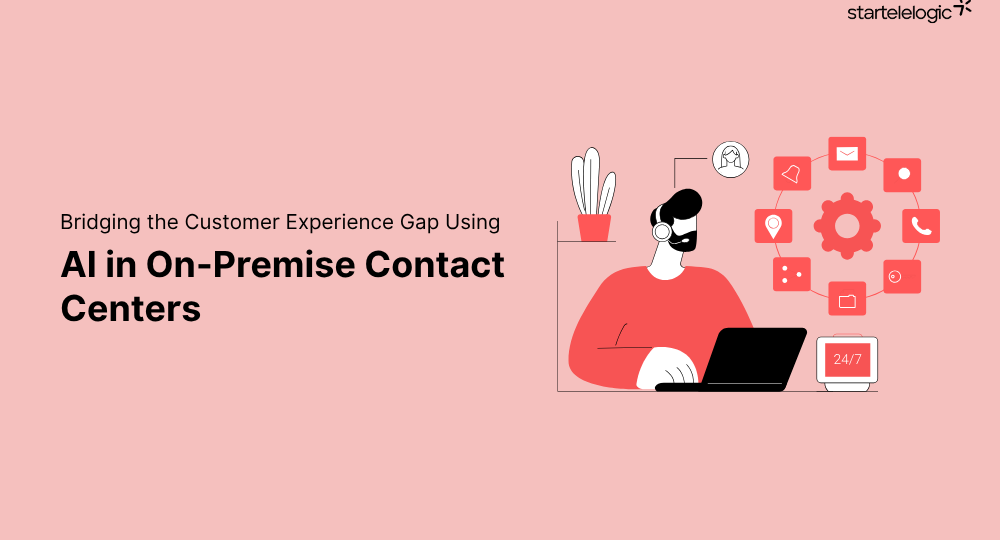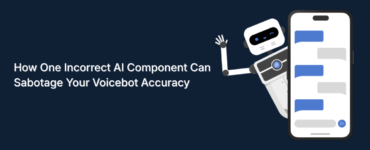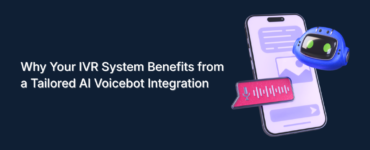In an era where customer expectations are higher than ever, delivering an exceptional customer experience (CX) has become a critical competitive advantage. Yet, despite its importance, many organizations continue to fall short. A recent PwC study found that while 73% of consumers consider customer experience (CX) a key driver in their purchasing decisions, less than half—only 49%—believe companies are meeting those expectations. This disconnect highlights a significant challenge, particularly for businesses that are still reliant on legacy infrastructure. While cloud-based contact center solutions are gaining momentum, a large number of organizations continue to operate on-premises systems due to regulatory, security, or financial constraints. Rather than undergoing a costly and complex full-scale migration, these businesses are now looking to artificial intelligence (AI) as a powerful enabler, modernizing their contact centers, improving customer interactions, and closing the CX gap without overhauling their entire IT ecosystem.
Understanding the Customer Experience Gap
The “customer experience gap” refers to the disconnect between what customers expect and what businesses actually deliver. Common issues include long wait times, repetitive conversations, limited personalization, and poor service consistency across channels. For on-premise contact centers, these challenges are amplified by outdated hardware, fragmented data, and limited scalability.
AI offers a way to address these issues head-on—without abandoning existing systems.
How AI Enhances On-Premise Contact Centers
AI isn’t just about automation—it’s about enabling smarter, faster, and more consistent customer interactions. Here’s how it enhances the core functions of on-premise contact centers:
1. Real-Time Call Analytics and Sentiment Detection
AI-enabled voice analysis tools present the remarkable ability to transcribe and evaluate conversations as they occur, offering an in-depth look at the dynamics of communication. These advanced tools meticulously gauge customer sentiment, distinguishing whether it leans towards positive, neutral, or negative. Furthermore, they astutely detect crucial emotional triggers, such as frustration or confusion, providing a more profound understanding of the emotional landscape during interactions. With this nuanced analysis, businesses can enhance their approach to customer service, ensuring a more empathetic and effective engagement.
How it helps:
- Agents can receive live coaching prompts or suggested scripts during difficult conversations.
- Supervisors can monitor calls in real-time and intervene if needed.
- Businesses gain actionable data to refine training and quality assurance efforts.
This capability ensures that customer emotions are acknowledged and addressed, reducing churn and improving satisfaction.
2. Intelligent Call Routing
Traditional call routing generally operates on a set of predefined rules, requiring callers to navigate through a menu by pressing specific numbers to reach different departments. This method can be somewhat rigid and lacks personalization. In contrast, AI routing offers a more dynamic and tailored experience by analyzing a wealth of data. It considers factors such as the caller’s history, their language preferences, and even the sentiment expressed in previous interactions. This sophisticated approach ensures that customers are connected with the agent who is best equipped to meet their unique needs, enhancing the overall efficiency and satisfaction of the customer service experience.
How it helps:
- Reduces call transfers by connecting customers to agents who are most likely to resolve the issue on the first attempt.
- Matches complex queries to more experienced staff, while routing simple ones to automated systems or junior agents.
- Improves First Contact Resolution (FCR), which directly impacts customer satisfaction scores.
By leveraging intelligent routing, on-premise contact centers can mimic the responsiveness of advanced cloud systems—without needing a complete infrastructure shift.
3. Virtual Assistants and Self-Service Options
AI-driven virtual assistants, which include chatbots and voice bots, can be seamlessly integrated into interactive voice response (IVR) systems, websites, or mobile applications. These intelligent bots are adept at efficiently managing high-volume, low-complexity inquiries, such as order tracking, appointment scheduling, and password resets. Their integration ensures that routine tasks are handled swiftly, allowing human agents to focus on more complex customer needs.
How it helps:
- Decreases the workload on live agents, allowing them to focus on high-value interactions.
- Offers 24/7 availability, which is especially useful for global organizations or those serving different time zones.
- Enhances customer satisfaction by enabling faster resolution without waiting in queues.
Even within an on-premise setup, these tools can be deployed using hybrid models, keeping sensitive data local while accessing AI engines via secure gateways.
4. Predictive Insights and Performance Optimization
AI engages in more than just reacting; it possesses the ability to foresee what lies ahead. By meticulously sifting through vast amounts of historical data from innumerable interactions, AI models have the capability to project future behaviors with remarkable accuracy. They can discern patterns and identify trends in performance, offering insights that seem almost prescient.
How it helps:
- Anticipates customer issues before they occur (e.g., flagging likely service disruptions or billing concerns).
- Identifies top-performing agents and replicates their behaviors across teams.
- Forecasts call volumes, helping managers optimize shift scheduling and reduce downtime or overstaffing.
These insights turn reactive service centers into proactive, customer-centric operations—even within the limitations of an on-premise environment.
On-Premise vs. Cloud AI: What’s the Right Fit?
As AI adoption grows, many businesses face a choice: stick with on-premise infrastructure or migrate to the cloud. Both have their benefits.
Cloud-based AI offers fast deployment, flexible scaling, and remote accessibility. However, it may raise concerns about data privacy, compliance, and control—especially for organizations in healthcare, finance, or government.
On-premise AI, while requiring more upfront investment, offers tighter control over data security and infrastructure. It’s ideal for companies with specific regulatory needs or those operating in regions with strict data sovereignty laws.
The good news? You don’t have to compromise. Today’s AI vendors offer hybrid models, allowing businesses to keep sensitive data on-site while still accessing cloud-based AI features when needed.
The Strategic Advantage of AI in On-Premise Contact Centers
Investing in AI-driven contact center solutions is not just about efficiency—it’s about future-proofing customer engagement strategies. Even for companies not ready for the cloud, AI allows them to:
- Deliver faster, more personalized service.
- Empower agents with the tools they need to succeed.
- Improve customer loyalty through consistent, high-quality interactions.
- Make data-driven decisions that improve service and reduce operational costs.
In other words, AI helps on-premise contact centers stay competitive in an increasingly digital-first world.
Meeting Expectations Without Leaving Your Infrastructure Behind
AI is helping companies improve how they talk to and help their customers, even if they still use older systems. It makes things quicker, easier, and less frustrating—for both customers and the people working in support. Simple tasks don’t take up as much time, and customers get the help they need faster.
Instead of changing everything or moving to the cloud, businesses can now make real improvements by using smart tools in the systems they already have. This means better service, happier customers, and a smoother experience for everyone involved.
Frequently Asked Questions (FAQs)
1. What is AI in on-premise contact centers?
AI in on-premise contact centers means using artificial intelligence tools like chatbots, voice assistants, and analytics software within a company’s local (non-cloud) customer service system. It helps improve the speed and quality of customer support without needing to move everything to the cloud.
2. Can AI work effectively without moving to a cloud system?
Yes, AI can work well on on-premise systems. Many companies use AI tools directly within their existing setup to handle customer queries, guide agents, and analyze calls. This allows them to improve service while keeping full control over their data.
3. What are the benefits of using AI in on-premise contact centers?
Some of the main benefits include faster response times, better service quality, reduced pressure on agents, and improved customer satisfaction. AI can also help spot common problems and suggest solutions before they grow bigger.
4. Is AI in on-premise contact centers expensive to set up?
The cost depends on the tools and the size of the contact center, but it’s often more affordable than a full system upgrade or cloud migration. Many AI solutions can be added step by step, so companies only pay for what they need.
5. What types of tasks can AI handle in an on-premise setup?
AI can answer common customer questions, guide callers through menu options, help agents during live calls, and review past conversations to find ways to improve. It can also predict peak hours to help with staffing and scheduling.
6. Do agents lose their jobs when AI is used?
No. In most cases, AI is used to support agents, not replace them. It handles repetitive tasks so human agents can focus on more complex issues. This makes their work easier and improves the overall customer experience.




